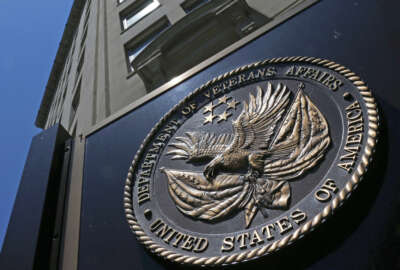Hubbard Radio Washington DC, LLC. All rights reserved. This website is not intended for users located within the European Economic Area.
On Air: Federal News Network
Trending:
Navy aims for more accountability, centralized authority in acquisition commands
After a decade in which relatively few questions were asked about resource allocations, Navy and Marine Corps acquisition leaders are moving to adjust to a new ...
wfedstaff | April 17, 2015 3:39 pm
Buying the systems sailors and marines need at a time of declining budgets is going to mean more cooperation, accountability and centralization, the leaders of several of the Navy Department’s major systems commands said Tuesday.
Navy and Marine Corps leaders who are responsible for building, buying and sustaining the services’ major ships, airplanes, helicopters and IT systems said they’re looking for ways to reduce duplication, promote efficiency, write better contracts and increase accountability for individual spending decisions.
“We’ve just come from 10 years where we’ve asked for and gotten more, more, more. We’ve not had to say no, ever,” said Brig. Gen. Frank Kelley, commander of Marine Corps Systems Command. “That profile has changed dramatically, and that causes a lot of churn in terms of what you can do, what you’re supposed to do and how your workforce sees their mission.” 
“We basically no longer have the resources to let each command or each program office optimize their organization at the expense of the fleet or the larger Navy,” said Rear Adm. Patrick Brady, who heads the Space and Naval Warfare systems Command, which handles the acquisition and sustainment of information systems.
“We need to develop and implement a governance model that controls the number of decentralized decisions that are made at lower levels in our organizations that may be producing sub-optimal outcomes for the Navy. That’s going to require close collaboration across the (systems commands), and it also requires that we have accountability down to individual people for our spending decisions.”
Kelley and Brady spoke Tuesday on a panel with acquisition leaders from across the military’s sea services at the Navy League’s annual Sea-Air-Space conference.
Some of that centralized governance structure is already beginning to take shape in the Navy’s systems commands. For example, the Navy’s shipbuilding organization, Naval Sea Systems Command, has set up “red lines” that dictate when certain types of contracts have to be approved from the very top, said Vice Adm. Kevin McCoy, NAVSEA’s commander, who will handle those approvals personally.
“For example, if you want to issue a one-bid contract, you’re going to come to me and explain why a one-bid contract out in the field is the right thing to do,” he said. “If you want to hire somebody who charges exorbitant fees, you’re going to come to me. We’re out of money, and now it’s time to think. We’re taking a very hard look at everything we do in our business. We expect to pay a fair price, we expect industry to make a fair profit, but when we sign a contract, we expect to get exactly what we pay for. I think the American people want to hold us to that accountability.” 
“It’s two parts. One is a contractual look. Is the vehicle we’re using as we go out and buy these things the right vehicle? Do we have somebody who looks at all the vehicles that are available? And the second thing is a technical authority look,” he said. “We’re only a few months into this process, but we’ve already seen some good results, particularly in the area of directing people to use different contract vehicles.”
Officials expect the tighter money controls to impact industry in a couple of ways. For one, McCoy, the commander of NAVSEA, said service contracts will be a focus area as the Navy looks for ways to find savings in its systems commands.
“These are things that don’t necessarily provide hardware for us, and most of our money goes out on contracts,” he said. “We’re looking at whether we need these service contractors, because we’ve hired up our own organic staff under the growth of the acquisition workforce. But we’re also looking at rates, we’re looking at contract structure, contract incentives and competition. We’re convinced that we can do more in terms of competition to bring our costs down. Why are we paying one price for naval architects in one part of the country and another price in another part of the country?”
McCoy said the sea systems command intends to use its size — a $30 billion budget and 60,000 employees — to negotiate lower rates for service contracts across all of its activities.
A realignment of the Navy’s ship programs has already meant that virtually all of the Navy’s vessels are now being built on fixed price contracts. The next step, McCoy said, would be a relentless insistence that programs meet their cost, schedule and performance targets. He said software and hardware need to work as advertised from day one.
“Now it’s really in the hands of industry and the program offices to execute cost, schedule and quality,” he said. “Now that we’ve stabilized our shipbuilding programs, we expect that industry and government teams will deliver those programs on cost, on schedule and with requisite quality. There is no margin in this era of austerity to fix things that don’t work after the fact. And from a force structure standpoint, we absolutely have to have each and every one of these ships.” 
But Vice Adm. David Architzel, who heads the Navy’s Air Systems Command, said his workforce would welcome that challenge.
“I see it every day,” he said. “It’s a culture we have that’s very much about producing and about being part of a solution, not hunkering down, but reaching out to find solutions for the warfighter.”
And for the Marine Corps, there’s an added challenge for the systems command’s workforce, Kelley said. They’re still responding to urgent present-day needs in Afghanistan, while planning acquisitions in an austere future at the same time.
“This is a time when we’ve been commanded to transition. The people we have today in our syscoms and our PEOs are the people who are going to take us through this transition,” he said. “But everybody is saying ‘bring it on.’ They want to be held accountable. They want to do this. It’s stressful when you think you’ve got to support the fight we’re in right now and also look to all those pressures and demands for things we see in the future for things like affordability, accountability and competition in an environment where over the last 10 years competition wasn’t stressed as much. But these people are going to make it happen.”
RELATED STORIES:
Navy targets 15 large software vendors for enterprise deals
Ship competition may offer Navy a buying model for the future
Navy makes enterprise technology contracts mandatory
Copyright © 2024 Federal News Network. All rights reserved. This website is not intended for users located within the European Economic Area.
Jared Serbu
Jared Serbu is deputy editor of Federal News Network and reports on the Defense Department’s contracting, legislative, workforce and IT issues.
Follow @jserbuWFED





